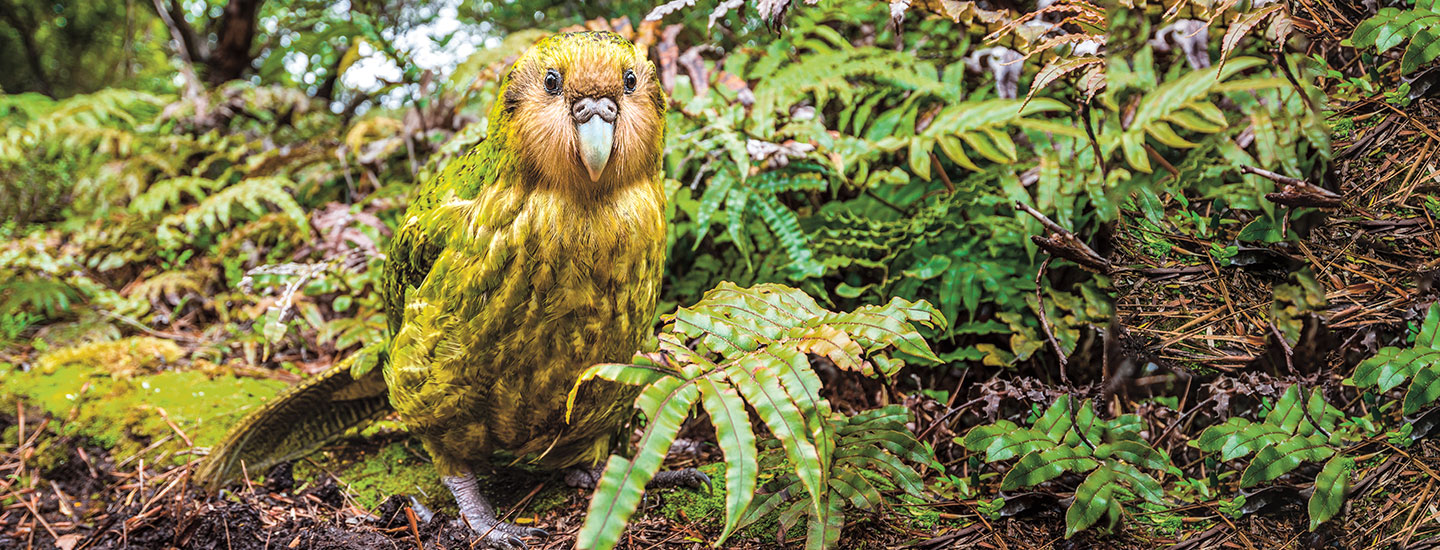A fluffy green bird hops through a forest in New Zealand. It climbs a tree, using its claws to grip the branches. The bird nibbles on berries and leaves until it’s satisfied. Then it leaps from the branch, spreading its wings to slow its fall.
This unusual bird is a parrot called a kakapo (kuh-KAH-poh). Kakapo stand apart from other parrots in many ways. They are heavier than all other parrots, weighing up to 4 kilograms (8.8 pounds). Unlike other parrots, kakapo can’t fly. They’re also the only parrots that are nocturnal. “We often say, ‘All parrots do this—except the kakapo !’” says Bronnie Jeynes. She’s a ranger with Kakapo Recovery, a program to help the birds.
A fluffy green bird hops through a forest in New Zealand. It climbs a tree, using its claws to grip the branches. The bird nibbles on berries and leaves. It leaps down when it’s done eating. It spreads its wings to slow its fall.
This odd bird is a parrot called a kakapo (kuh-KAH-poh). Kakapo are different from other parrots in many ways. They are heavier than all other parrots. They weigh up to 4 kilograms (8.8 pounds). Kakapo can’t fly like other parrots. They’re also the only parrots that are nocturnal. “We often say, ‘All parrots do this—except the kakapo!’” says Bronnie Jeynes. She’s a ranger with Kakapo Recovery, a program that helps the birds.

